Wednesday, July 7, 2010
A Fortuitous Meeting
In June, I wandered around a lovely book shop in the small Minnesota city of Winona. There I bought a memoir about Italian/American immigrants and met the author, Emilio DeGrazia. The book, Walking on Air in a Field of Greens, was a delightful discussion of Italian family connections including a mediation on life in old Calabria, the perils of immigration and the questions facing those considering the journey. Should one go or stay? If one goes, should one embrace the new culture or cling to the old? Or find a moderate path between? In this discussion of racism and the unknown immigrant, DeGrazia muses on the city of Dearborn Michigan, a city which mirrors all these issues.
EYE SHADOW by Emilio DeGrazia
Whenever the Twins play the Tigers I zip my lips. Detroit isn’t really my home town. I was born in Dearborn just a few blocks from the limits of Detroit, but the boy in me still quivers when I see that gothic “D” on a white Tiger uniform. The quiver is for a Detroit I remember as a kid––the downtown skyscrapers, Belle Isle, the spacious parks, the Woodward and Michigan Avenue shops. When I think of Detroit now I imagine it to be more devastated than Baghdad and maybe more dangerous. Detroit is a tragically dysfunctional city that does not inspire confidence in the American way of life.
Dearborn, the large suburban city that now makes a stranger of me, is someplace else. I find it hard to believe that Detroit’s old elegance will be restored, but my recent trip to Dearborn gave me a hint of hope that our war with Islamic radicals may peter out.
By accident of birth, the few blocks that kept me on the Dearborn side of the Dearborn/Detroit divide, I escaped the decline and fall of Detroit, That divide was grounded on separatist beliefs that built invisible walls. “Help Keep Dearborn Clean” was the slogan I learned by heart as a kid. “Clean” was silently pronounced “White.” Dearborn was kept clean by unwritten codes strictly enforced by goons who wore ties and rolled up the sleeves of their white shirts when they went to work to confront and intimidate anyone suspected of violating their segregationist codes. Real estate agents and city building inspectors ranked high in this army of goons. Of the tens of thousands of auto workers who routinely took buses from their homes in Detroit to work in Henry Ford’s sprawling Rouge Plant in Dearborn, 80% were African/Americans. Not one black auto worker lived inside Dearborn’s invisible walls. The goons made sure of that.
Nor did any Jews live in Dearborn.
While legendary Dearborn mayor Orville Hubbard kept Dearborn “clean” for decades, Henry Ford kept out the Jews. Ford’s antagonism to Jews pre-dated World War I, when he concluded they were not good for business. He mounted a visible campaign that lasted into the World War II years, with allegations of his cozy relations with Hitler often surfacing. Ford’s local solution to the “Jewish problem” was to encourage the development of an Arab/American enclave in Dearborn’s Salina district near the Ford Rouge factory. Arab/Americans settled in the Salina neighborhood, worked in the Ford Rouge, and began to prosper and expand beyond Salina. Dearborn now has the nation’s highest concentration of Arab/Americans. In my day Salina Junior High was one of four junior high schools that fed into my old high school, Fordson. Today the student body of Fordson High is more than 90% Arab/American. If the smokestacks of the huge Rouge factory now look sullen and defunct as they loom over the east side of Dearborn, many Dearborn streets are alive with small markets, restaurants, and shops owned by Arab/Americans.
Meanwhile, just a few blocks away on the other side of invisible walls, Detroit continues to decline. The billions we’ve spent in Baghdad and Kabul have not trickled down inside those walls.
I return now and then to visit family, aware not only of the long-term and ongoing conflicts between blacks and whites but of the anti-Arab suspicions and fears exacerbated by the so-called war on terror associated mainly with Muslims in the Middle East. When I drive past Fordson High, I see the schoolgirls wearing headscarfs and, in a few cases, face veils, symbols in my mind of a vast divide between secular modernists and Muslim immigrants. Anti-Muslim feelings, periodically enflamed by a terrorist act, run high in places where Muslims have not been visibly assimilated. Europe also knows the issue well. As people of European stock see their populations level off or actually decline, they see swelling numbers of Muslims in their midst. Most visible are Muslim women and girls distinguishable by the traditional garb that clearly is intended to keep them covered and backgrounded if not invisible. This traditional garb casts a shadow over the more open and overtly sexual styles conspicuously advertised and now standard to the Westernized eye. How can conservative Muslim attitudes toward women co-exist with the open if conflicted sexual attitudes of modernists? How can hooded Muslim women and outspoken feminists co-exist? The gap between the two ways of life seem so deep and wide that we’re reminded of the epigraph to E.M. Forster’s timeless novel Passage to India: “Only connect.” So does the pessimism of the novel’s final page come to mind, where the best intentions of the novel’s main characters have gone so awry that they leave West and East five hundred years apart.
It’s easy to be pessimistic about Detroit. The solution there would require the equivalent of a new urban Marshall Plan, one that addresses neighborhoods one by one while putting in place the systems needed to turn around individual lives. Such a plan is conceivable and would work, but what’s lacking is political will to put it in motion. The “war on terror” not only distracts us from such a plan but is ongoing, exhausting, and virtual, having no clear boundary lines. In that war the walls are also mainly invisible, if semi-permeable. To win is to make small but steady inroads into hearts and minds.
Dearborn, with its majority of Arab/Americans, seems like a good place to start. My Italian/American relatives still living there are decent hard-working people who have endured their share of the troubles most immigrants face for a generation or two, at least. But it didn’t take long for me to understand that many of these good folk harbor a resentment of the Muslim “takeover” of their neighborhoods and schools. Did I know that a few years ago a Muslim father marched into Fordson High and shot his daughter because she, without asking for her father’s consent, was dating a boy? How can we live with people like that? And now they, these Muslim others, own more and more of the local businesses, so in a few years we’ll be nobodies again. All women will have to wear headscarves and veils if we let them have their way.
What could I do but heap praise on good old American separation of church and state, and thank God we don’t have prayer in the schools, laws against it some of my bitter Christian relatives would like to see reversed.
I persuaded my sister to accept the obvious: The Arabic/American restaurants in her neighborhood are fabulous. Could I treat her to dinner in one of my favorites?
The offer was almost as hard for her to accept as it was to reject. She loves to eat, but she shops in Italian markets, not Arab ones. And what’s wrong with Italian restaurants? But I knew of one Arabic restaurant, just a few blocks away, she would not be able to resist. I reminded her of the fragrances she knew well––cinnamon, cumin, cloves. Food. Fresh food in dishes well prepared. And beautifully served.
I had her––as love once had her when she was a teenage girl. The allure of it, the attraction she had to work at so hard to suppress.
If we––Italians and Arabs and fascists and communists and blacks and whites and pinks––could routinely feast together on the very best dishes of beautiful food, some lasting good would come of it.
I saw the young woman as my sister and I were standing in line at the Arabic restaurant. She was about eighteen, dark-skinned and slender, one of them, with all but a few strands of her black hair hidden from view. Her head scarf, tightly wrapped, draped down over her blouse, framing her face in an oval that sharpened the fine features of her face and the depth of her eyes. And there, just below those eyes, I saw the hint that inspired by hope that terrorist wars, like old warriors, someday might just fade away.
Eye shadow.
A thin layer carefully applied, as if to obscure against the darkness of her skin the thoughts behind her black eyes: Eye shadow at once veil and mask, behind which a young woman lurks with intent to defy the most fanatically conservative Islamic patriarchs.
Her father stood to one side of her, staring at me with an expression that warned me to keep my eyes off her, as if they were hands. He is not pleased with me, or with her.
I keep my eyes to myself, though I’m certain her father suspects she has eyes for someone else, a boyfriend, or a young man she is yet to meet, the lover in her mind. Her eye shadow advertises her desire. She is a painted woman, and the paint is black.
Where is the hope for an end to terrorist wars in the two black smears that adorn her eyes? Hope shows its perverse ways in her angry father’s face. Her eye shadow is her mark of defiance of her father’s ways, his need to control her destiny. He is losing her; he can’t prevent her from painting her face. The headscarf will have to do, and she is willing enough to hide her lovely hair in it, perhaps for now or for a much longer time. Father and daughter walk an unsteady Islamic line on American streets where sexy women enjoy strutting their stuff in open view. The father loathes the ideas these women represent, but he can’t keep himself from now and then secreting a glance toward them. He could love what he hates.
This drama repeats itself daily worldwide.
Because his daughter, like all daughters, is ready to love. Love is natural food for her young soul. If her headscarf honors her origins and signals her willingness to respect her traditions and family, the eye shadow advertises her attraction to the other, even, perhaps someday, a Christian boy. Her eye shadow reveals that she has the courage to negotiate her way into the modernist world while requiring that world to honor the modesty of her traditional ways. She is becoming a moderate Muslim.
But modernist American culture seems vulgar, greedy, whorish and violent to her. Its Methodist Sunday School picnics and genuine pieties and charities do not appear on the reality shows or movie screens. The young Muslim woman sees garish American decadence as she looks for the right person to love. She is modest, decent, perhaps confused. She will have to negotiate her way through two worlds seriously at odds with each other, find a middle way that will allow her love to thrive and endure. She will have to find good reason to become the moderate Arab/American/Muslim she prefers to be. This means that one day, perhaps, the headscarf will go and she will let down her beautiful black hair for the world to see.
Her father will not want to let go of her. Like fathers everywhere he resists losing control of her, and no boy not of his choosing will be worthy of her. Father and daughter will rage against each other, perhaps not quietly. Her eye shadow is an act of rebellion against him. When she is sixteen he will make her wash it off, but she will put it on at night when he’s asleep and look at her face in the mirror. When she is nineteen she will say no to him again, and he again will rage against her. Her little sister shrinks from their war, but she’s on her big sister’s side. The father will lose.
The worry is what she will have to gain. A lover, perhaps a decent Arab/American/Muslim youth. But what will American decadence make of them, or make them do when they have their own teenage girls? Will American culture have anything better than its reality shows, Hollywood movies, video games, greedy capitalism, and vulgar ads targeted at girls nurtured on modesty and decency? Will it be time for headscarfs and veils again?
The Arabic restaurant was no McDonald’s or Burger King. The dishes were beautiful and fragrant with nameless spices. The eye-shadowed girl did not know I exist, but I watched her eyes dart around the room as she and her father got up to leave. I felt sorry for him, for the battle he would lose while losing her too, and I wondered if he secretly might be a moderate Muslim too, trying, as we often do, to negotiate his way past big differences. I regretted not being able to talk to him, explain to him that I thought of Dearborn as my home town and once felt an ownership of the place. And that I had to give up my old sense of ownership, because now it is more his than mine. Over good food we easily could have agreed to be moderates.
Where are the voices of the moderates, those able and willing to balance conflicting claims? Are they lost in the vengeful prayers of Muslim radicals and in the noise of American vulgarities?
Who will take the hand of the eye-shadowed girl and help her see her way when she leaves her father’s house? When I leave I will take her eye-shadowed hope with me to my Minnesota home, but I leave her behind in the shadow of a Detroit perhaps more hopeless and off the radar than Baghdad or Kabul.
Two footnotes:
In the summer of 2010 the French assembly voted 490-0 to ban the face veil.
Rima Fakir, of Dearborn, Michigan, was selected as Miss USA for the year 2010. She’s Arab/American/Muslim.
EYE SHADOW by Emilio DeGrazia
Whenever the Twins play the Tigers I zip my lips. Detroit isn’t really my home town. I was born in Dearborn just a few blocks from the limits of Detroit, but the boy in me still quivers when I see that gothic “D” on a white Tiger uniform. The quiver is for a Detroit I remember as a kid––the downtown skyscrapers, Belle Isle, the spacious parks, the Woodward and Michigan Avenue shops. When I think of Detroit now I imagine it to be more devastated than Baghdad and maybe more dangerous. Detroit is a tragically dysfunctional city that does not inspire confidence in the American way of life.
Dearborn, the large suburban city that now makes a stranger of me, is someplace else. I find it hard to believe that Detroit’s old elegance will be restored, but my recent trip to Dearborn gave me a hint of hope that our war with Islamic radicals may peter out.
By accident of birth, the few blocks that kept me on the Dearborn side of the Dearborn/Detroit divide, I escaped the decline and fall of Detroit, That divide was grounded on separatist beliefs that built invisible walls. “Help Keep Dearborn Clean” was the slogan I learned by heart as a kid. “Clean” was silently pronounced “White.” Dearborn was kept clean by unwritten codes strictly enforced by goons who wore ties and rolled up the sleeves of their white shirts when they went to work to confront and intimidate anyone suspected of violating their segregationist codes. Real estate agents and city building inspectors ranked high in this army of goons. Of the tens of thousands of auto workers who routinely took buses from their homes in Detroit to work in Henry Ford’s sprawling Rouge Plant in Dearborn, 80% were African/Americans. Not one black auto worker lived inside Dearborn’s invisible walls. The goons made sure of that.
Nor did any Jews live in Dearborn.
While legendary Dearborn mayor Orville Hubbard kept Dearborn “clean” for decades, Henry Ford kept out the Jews. Ford’s antagonism to Jews pre-dated World War I, when he concluded they were not good for business. He mounted a visible campaign that lasted into the World War II years, with allegations of his cozy relations with Hitler often surfacing. Ford’s local solution to the “Jewish problem” was to encourage the development of an Arab/American enclave in Dearborn’s Salina district near the Ford Rouge factory. Arab/Americans settled in the Salina neighborhood, worked in the Ford Rouge, and began to prosper and expand beyond Salina. Dearborn now has the nation’s highest concentration of Arab/Americans. In my day Salina Junior High was one of four junior high schools that fed into my old high school, Fordson. Today the student body of Fordson High is more than 90% Arab/American. If the smokestacks of the huge Rouge factory now look sullen and defunct as they loom over the east side of Dearborn, many Dearborn streets are alive with small markets, restaurants, and shops owned by Arab/Americans.
Meanwhile, just a few blocks away on the other side of invisible walls, Detroit continues to decline. The billions we’ve spent in Baghdad and Kabul have not trickled down inside those walls.
I return now and then to visit family, aware not only of the long-term and ongoing conflicts between blacks and whites but of the anti-Arab suspicions and fears exacerbated by the so-called war on terror associated mainly with Muslims in the Middle East. When I drive past Fordson High, I see the schoolgirls wearing headscarfs and, in a few cases, face veils, symbols in my mind of a vast divide between secular modernists and Muslim immigrants. Anti-Muslim feelings, periodically enflamed by a terrorist act, run high in places where Muslims have not been visibly assimilated. Europe also knows the issue well. As people of European stock see their populations level off or actually decline, they see swelling numbers of Muslims in their midst. Most visible are Muslim women and girls distinguishable by the traditional garb that clearly is intended to keep them covered and backgrounded if not invisible. This traditional garb casts a shadow over the more open and overtly sexual styles conspicuously advertised and now standard to the Westernized eye. How can conservative Muslim attitudes toward women co-exist with the open if conflicted sexual attitudes of modernists? How can hooded Muslim women and outspoken feminists co-exist? The gap between the two ways of life seem so deep and wide that we’re reminded of the epigraph to E.M. Forster’s timeless novel Passage to India: “Only connect.” So does the pessimism of the novel’s final page come to mind, where the best intentions of the novel’s main characters have gone so awry that they leave West and East five hundred years apart.
It’s easy to be pessimistic about Detroit. The solution there would require the equivalent of a new urban Marshall Plan, one that addresses neighborhoods one by one while putting in place the systems needed to turn around individual lives. Such a plan is conceivable and would work, but what’s lacking is political will to put it in motion. The “war on terror” not only distracts us from such a plan but is ongoing, exhausting, and virtual, having no clear boundary lines. In that war the walls are also mainly invisible, if semi-permeable. To win is to make small but steady inroads into hearts and minds.
Dearborn, with its majority of Arab/Americans, seems like a good place to start. My Italian/American relatives still living there are decent hard-working people who have endured their share of the troubles most immigrants face for a generation or two, at least. But it didn’t take long for me to understand that many of these good folk harbor a resentment of the Muslim “takeover” of their neighborhoods and schools. Did I know that a few years ago a Muslim father marched into Fordson High and shot his daughter because she, without asking for her father’s consent, was dating a boy? How can we live with people like that? And now they, these Muslim others, own more and more of the local businesses, so in a few years we’ll be nobodies again. All women will have to wear headscarves and veils if we let them have their way.
What could I do but heap praise on good old American separation of church and state, and thank God we don’t have prayer in the schools, laws against it some of my bitter Christian relatives would like to see reversed.
I persuaded my sister to accept the obvious: The Arabic/American restaurants in her neighborhood are fabulous. Could I treat her to dinner in one of my favorites?
The offer was almost as hard for her to accept as it was to reject. She loves to eat, but she shops in Italian markets, not Arab ones. And what’s wrong with Italian restaurants? But I knew of one Arabic restaurant, just a few blocks away, she would not be able to resist. I reminded her of the fragrances she knew well––cinnamon, cumin, cloves. Food. Fresh food in dishes well prepared. And beautifully served.
I had her––as love once had her when she was a teenage girl. The allure of it, the attraction she had to work at so hard to suppress.
If we––Italians and Arabs and fascists and communists and blacks and whites and pinks––could routinely feast together on the very best dishes of beautiful food, some lasting good would come of it.
I saw the young woman as my sister and I were standing in line at the Arabic restaurant. She was about eighteen, dark-skinned and slender, one of them, with all but a few strands of her black hair hidden from view. Her head scarf, tightly wrapped, draped down over her blouse, framing her face in an oval that sharpened the fine features of her face and the depth of her eyes. And there, just below those eyes, I saw the hint that inspired by hope that terrorist wars, like old warriors, someday might just fade away.
Eye shadow.
A thin layer carefully applied, as if to obscure against the darkness of her skin the thoughts behind her black eyes: Eye shadow at once veil and mask, behind which a young woman lurks with intent to defy the most fanatically conservative Islamic patriarchs.
Her father stood to one side of her, staring at me with an expression that warned me to keep my eyes off her, as if they were hands. He is not pleased with me, or with her.
I keep my eyes to myself, though I’m certain her father suspects she has eyes for someone else, a boyfriend, or a young man she is yet to meet, the lover in her mind. Her eye shadow advertises her desire. She is a painted woman, and the paint is black.
Where is the hope for an end to terrorist wars in the two black smears that adorn her eyes? Hope shows its perverse ways in her angry father’s face. Her eye shadow is her mark of defiance of her father’s ways, his need to control her destiny. He is losing her; he can’t prevent her from painting her face. The headscarf will have to do, and she is willing enough to hide her lovely hair in it, perhaps for now or for a much longer time. Father and daughter walk an unsteady Islamic line on American streets where sexy women enjoy strutting their stuff in open view. The father loathes the ideas these women represent, but he can’t keep himself from now and then secreting a glance toward them. He could love what he hates.
This drama repeats itself daily worldwide.
Because his daughter, like all daughters, is ready to love. Love is natural food for her young soul. If her headscarf honors her origins and signals her willingness to respect her traditions and family, the eye shadow advertises her attraction to the other, even, perhaps someday, a Christian boy. Her eye shadow reveals that she has the courage to negotiate her way into the modernist world while requiring that world to honor the modesty of her traditional ways. She is becoming a moderate Muslim.
But modernist American culture seems vulgar, greedy, whorish and violent to her. Its Methodist Sunday School picnics and genuine pieties and charities do not appear on the reality shows or movie screens. The young Muslim woman sees garish American decadence as she looks for the right person to love. She is modest, decent, perhaps confused. She will have to negotiate her way through two worlds seriously at odds with each other, find a middle way that will allow her love to thrive and endure. She will have to find good reason to become the moderate Arab/American/Muslim she prefers to be. This means that one day, perhaps, the headscarf will go and she will let down her beautiful black hair for the world to see.
Her father will not want to let go of her. Like fathers everywhere he resists losing control of her, and no boy not of his choosing will be worthy of her. Father and daughter will rage against each other, perhaps not quietly. Her eye shadow is an act of rebellion against him. When she is sixteen he will make her wash it off, but she will put it on at night when he’s asleep and look at her face in the mirror. When she is nineteen she will say no to him again, and he again will rage against her. Her little sister shrinks from their war, but she’s on her big sister’s side. The father will lose.
The worry is what she will have to gain. A lover, perhaps a decent Arab/American/Muslim youth. But what will American decadence make of them, or make them do when they have their own teenage girls? Will American culture have anything better than its reality shows, Hollywood movies, video games, greedy capitalism, and vulgar ads targeted at girls nurtured on modesty and decency? Will it be time for headscarfs and veils again?
The Arabic restaurant was no McDonald’s or Burger King. The dishes were beautiful and fragrant with nameless spices. The eye-shadowed girl did not know I exist, but I watched her eyes dart around the room as she and her father got up to leave. I felt sorry for him, for the battle he would lose while losing her too, and I wondered if he secretly might be a moderate Muslim too, trying, as we often do, to negotiate his way past big differences. I regretted not being able to talk to him, explain to him that I thought of Dearborn as my home town and once felt an ownership of the place. And that I had to give up my old sense of ownership, because now it is more his than mine. Over good food we easily could have agreed to be moderates.
Where are the voices of the moderates, those able and willing to balance conflicting claims? Are they lost in the vengeful prayers of Muslim radicals and in the noise of American vulgarities?
Who will take the hand of the eye-shadowed girl and help her see her way when she leaves her father’s house? When I leave I will take her eye-shadowed hope with me to my Minnesota home, but I leave her behind in the shadow of a Detroit perhaps more hopeless and off the radar than Baghdad or Kabul.
Two footnotes:
In the summer of 2010 the French assembly voted 490-0 to ban the face veil.
Rima Fakir, of Dearborn, Michigan, was selected as Miss USA for the year 2010. She’s Arab/American/Muslim.
Subscribe to:
Post Comments (Atom)
















































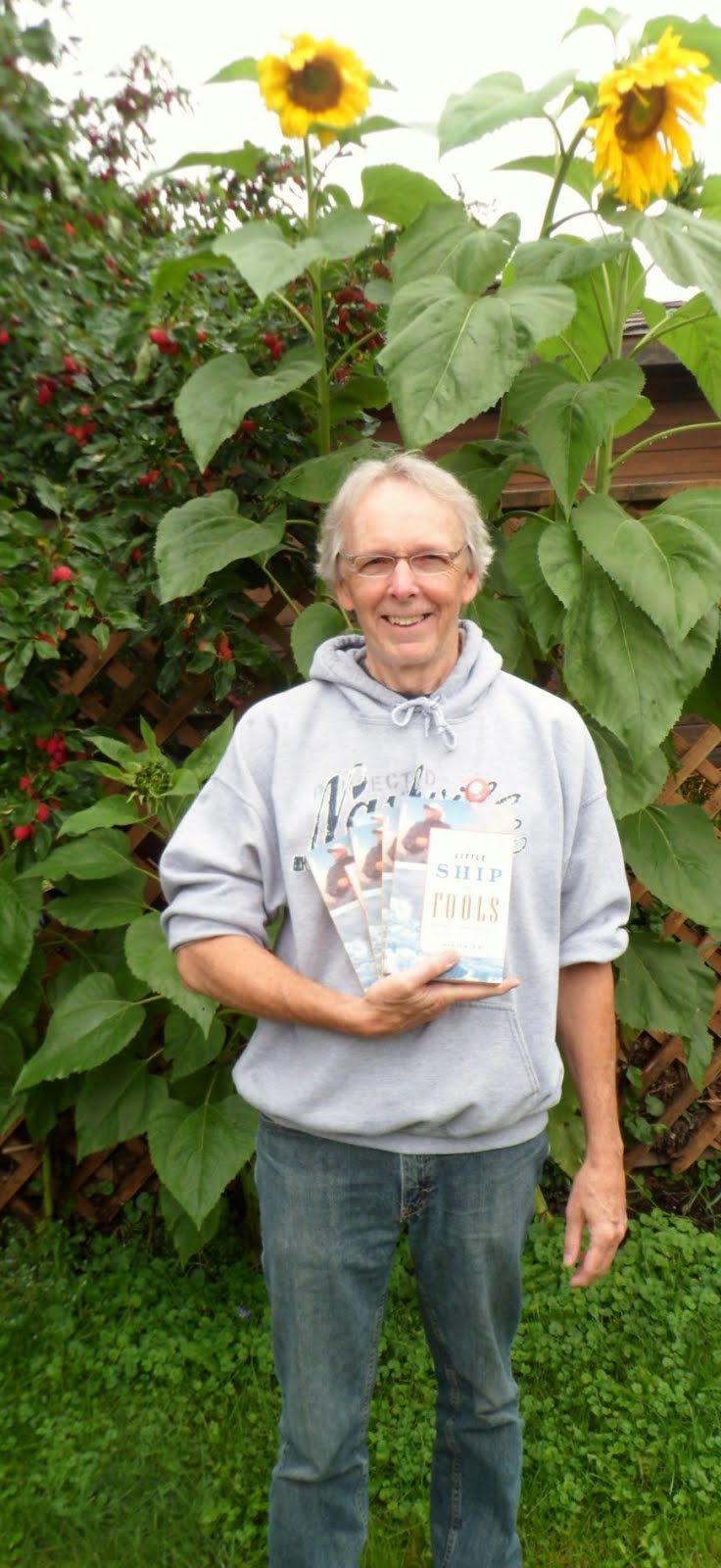





























































































































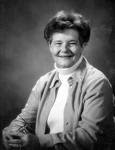


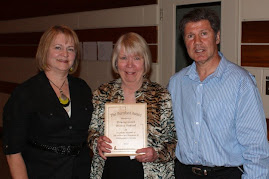









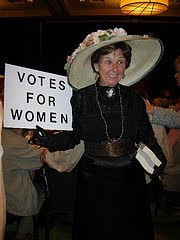




















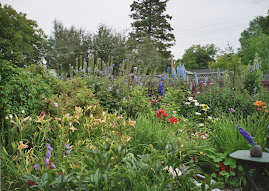

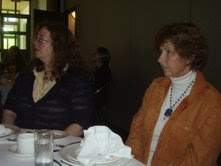




































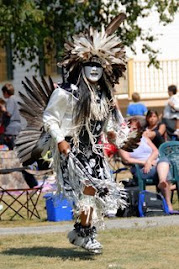






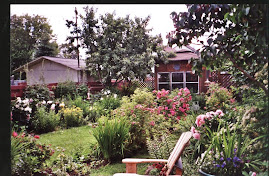
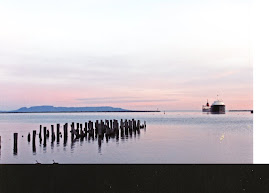









No comments:
Post a Comment